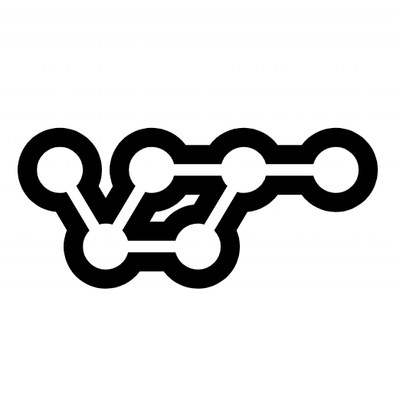
Security News
vlt Launches "reproduce": A New Tool Challenging the Limits of Package Provenance
vlt's new "reproduce" tool verifies npm packages against their source code, outperforming traditional provenance adoption in the JavaScript ecosystem.
forge-apis
Advanced tools
The Forge Platform contains an expanding collection of web service components that can be used with Autodesk cloud-based products or your own technologies. From visualizing data to 3D printing, take advantage of Autodesk’s expertise in design and engineer
This Node.js SDK (version 0.1.6) enables you to easily integrate the Forge REST APIs into your application, including Data Management, Model Derivative, 3D Print, and Design Automation.
npm install forge-apis --save
Follow this tutorial to see a step-by-step authentication guide, and examples of how to use the (Data Management) APIs.
Create an app on the Forge Developer portal, and select the desired API products in the app creation page (e.g., Data Management API). Note the app key and app secret.
This SDK comes with an OAuth2 client that allows you to retrieve 2-legged and 3-legged tokens. It also enables you to refresh 3-legged tokens. The tutorial uses 2-legged and 3-legged tokens for calling different Data Management endpoints.
This type of token is given directly to the application without the user's consent. To get a 2-legged token run the following code:
var ForgeSDK = require('forge-apis');
var CLIENT_ID = '<your-client-id>' , CLIENT_SECRET = '<your-client-secret>';
// Initialize the 2-legged OAuth2 client, and optionally set specific scopes.
// If you omit scopes, the generated token will have all scope permissions.
var oAuth2TwoLegged = new ForgeSDK.AuthClientTwoLegged(CLIENT_ID, CLIENT_SECRET, [
'data:read',
'data:write'
]);
oAuth2TwoLegged.authenticate().then(function(credentials){
// The `credentials` object contains an access_token that you use to call the endpoints.
// You can set the credentials globally on the oauth client and retrieve them later on.
oAuth2TwoLegged.setCredentials(credentials);
}, function(err){
console.error(err);
});
To ask for permissions from a user to retrieve an access token, you redirect the user to a consent page. Run this code to create a consent page URL:
var ForgeSDK = require('forge-apis');
var CLIENT_ID = '' , CLIENT_SECRET = '', REDIRECT_URL = '';
// Initialize the 3-legged OAuth2 client, and optionally set specific scopes.
// If you omit scopes, the generated token will have all scope permissions.
var oAuth2ThreeLegged = new ForgeSDK.AuthClientThreeLegged(CLIENT_ID, CLIENT_SECRET, REDIRECT_URL, [
'data:read',
'data:write'
]);
// Generate a URL page that asks for permissions for the specified scopes.
oAuth2ThreeLegged.generateAuthUrl();
Once a user has given permissions on the consent page, Forge will redirect the page to the redirect URL you provided when you created the app. An authorization code is returned in the query string.
GET /callback?code={authorizationCode}
Request an access token using the authorization code you received, as shown below:
oAuth2ThreeLegged.getToken(authorizationCode).then(function (credentials) {
// The `credentials` object contains an access_token and an optional refresh_token that you can use to call the endpoints.
}, function(err){
console.error(err);
});
To refresh your access token, call the oAuth2ThreeLegged.refreshToken(credentials); method.
Use the credentials object to call the Forge APIs.
// Import the library.
var ForgeSDK = require('forge-apis');
// Initialize the relevant clients; in this example, the Hubs and Buckets clients (part of the Data Management API).
var HubsApi = new ForgeSDK.HubsApi(); //Hubs Client
var BucketsApi = new ForgeSDK.BucketsApi(); //Buckets Client
// Get the buckets owned by an application.
// Use the twoLeggedCredentials that you retrieved above.
BucketsApi.getBuckets({}, twoLeggedCredentials).then(function(buckets){
console.log('buckets details response:');
console.log(buckets);
});
// Get the hubs that are accessible for a member.
// Use the threeLeggedCredentials that you retrieved above.
HubsApi.getHubs({}, threeLeggedCredentials).then(function(hubs) {
console.log('hubs details response:');
console.log(hubs);
});
FAQs
The Forge Platform contains an expanding collection of web service components that can be used with Autodesk cloud-based products or your own technologies. Take advantage of Autodesk’s expertise in design and engineering.
The npm package forge-apis receives a total of 7,000 weekly downloads. As such, forge-apis popularity was classified as popular.
We found that forge-apis demonstrated a healthy version release cadence and project activity because the last version was released less than a year ago. It has 2 open source maintainers collaborating on the project.
Did you know?

Socket for GitHub automatically highlights issues in each pull request and monitors the health of all your open source dependencies. Discover the contents of your packages and block harmful activity before you install or update your dependencies.

Security News
vlt's new "reproduce" tool verifies npm packages against their source code, outperforming traditional provenance adoption in the JavaScript ecosystem.

Research
Security News
Socket researchers uncovered a malicious PyPI package exploiting Deezer’s API to enable coordinated music piracy through API abuse and C2 server control.

Research
The Socket Research Team discovered a malicious npm package, '@ton-wallet/create', stealing cryptocurrency wallet keys from developers and users in the TON ecosystem.